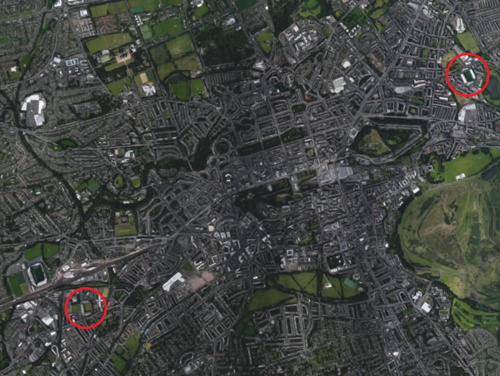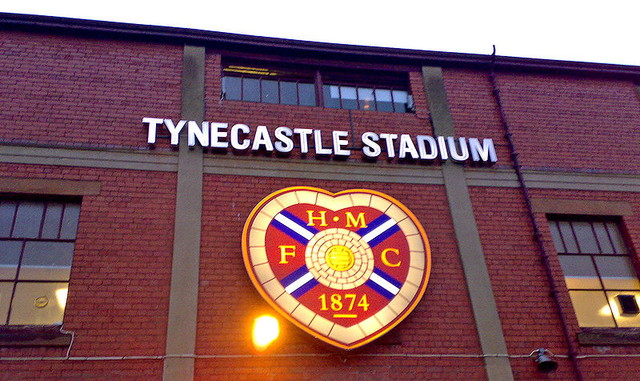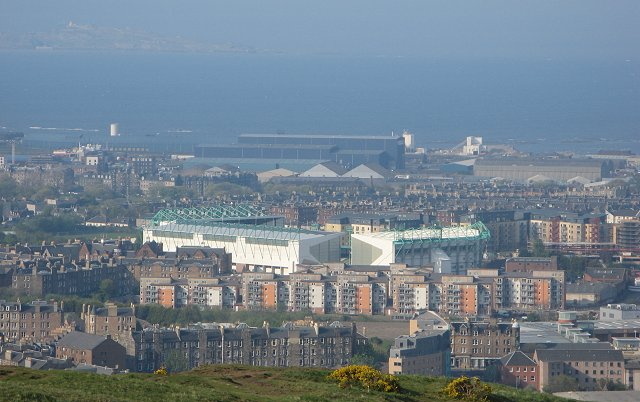
Let’s be honest, when it comes to Scottish football and a city rivalry the first place you think of is not Edinburgh. The Old Firm between Glasgow’s Celtic and Rangers is one of the most fiercely contested city derbies in the entire world, so it’s fair to say that they get most of the attention.
Only fair when you consider that they are also by far and away Scottish football’s most successful teams. There is, in many ways, something of a rivalry between the cities of Glasgow and Edinburgh after the latter was made the capital of the country at the expense of the former, but does that translate in terms of football?
To an extent, yes. Edinburgh is more of a ‘multi-sports’ city, with rugby and ice hockey teams sharing the stage with football clubs. Still, football remains the most popular sport in the United Kingdom for a reason and that’s no different in the Scottish capital to anywhere else.
Heart of Midlothian and Hibernian might not have the same global appeal as Celtic versus Rangers, but that doesn’t mean that it’s not worth discussing the two clubs in the context of a city with more than big team within its borders. It’s not as fiery as the derbies in the likes of Liverpool, Manchester or along the road in Glasgow, but any teams located within a few miles of each other will always enjoy claiming bragging rights.
{module Maps – Cities – Edinburgh}
Football Stadiums in Edinburgh
| Stadium | Capacity | Team | League |
|---|---|---|---|
| Easter Road | 20,421 | Hibernian | Scottish Premiership |
| Tynecastle | 20,099 | Heart Of Midlothian | Scottish Premiership |
Heart of Midlothian – Tynecastle Stadium (1.42 Miles to Edinburgh Castle)

Heart of Midlothian Football Club have always been better known by the shorter moniker of simply ‘Hearts’. The club was founded in 1874 by a group of mates who were in the Heart of Midlothian Quadrille Assembly Club, a dance troupe, who decided to set up a football club after watching a game between Queens Park and Clydesdale. Back then the style of football that they played was something of a cross between modern day football and rugby, with Football Association rules having not yet been decided upon across the board.
Interestingly the club took its name from a local jail named Heart of Midlothian. It had been demolished in 1817 but featured in a book named The Heart of Midlothian by the author Walter Scott. The club joined the Scottish Football Association just a year after forming, also becoming founding members of the Edinburgh Football Association. Nowadays the Scottish Premiership is depressingly predictable and has been for years, with one of Celtic or Rangers as good as guaranteed to win the top-flight North of the border. That hasn’t always been the case, though, and back when the Scottish Football League was first formed Hearts were actually very successful.
League wins in both 1895 and 1897 sandwiched a Scottish Cup win in 1896. They won the Cup again in 1901 and 1906, but after that things dried up until the 1950s. Four Scottish top-flight trophies, back before it split away from the Scottish Football League, eight Scottish Cups and four Scottish League Cups is nothing to be sniffed at, of course, and at the end of the 1950s they became just the fifth British team ever to compete in European competition. In the end they lost out to Bayern Munich in the quarter-finals of the UEFA Cup, but the fact that they competed in it at all was somewhat remarkable.
The Meadows is one of the most popular parks in Edinburgh, located close to the city centre and often used by students as a place to relax when the weather’s good. Back in the day, however, it was the home of Hearts, who played their football there until moving to the Gorgie area of the city in 1881 before relocating to their current home, Tynecastle, in 1886. When it comes to their city rivals, they first went up against Hibernian Football Club on Christmas Day of 1875. It was the first match that Hits had ever played and in 1878 the two clubs secured their place in the mind of most football fans when they played five matches as part of the Edinburgh Football Association Cup. Hearts eventually went on to win the match.
Hibernian – Easter Road (1.63 Miles to Edinburgh Castle)

As you will know if you have read our piece above about Hearts, Hibernian’s first ever game was actually a Christmas Day match against their city rivals, which Hearts won 1-0. It took place in 1875, just a few months after the club had been formed. Initially the club was set up by Irish immigrants but, unlike with Celtic and Rangers, support of the club is not based around any form of ethnicity or religion. Instead it’s all about geographical location, with Hearts and Hibs competing for loyalty with each other, as well as with Edinburgh City Football Club. The main links to the club’s Irish origins come in the form of the colours that the play in – green and white – as well as the name. Hibernia, after all, is the Roman word for ‘Ireland’.
Though the religious side of things is not relevant in the modern day, there was a fair degree of resistance about the possibility of a club with links to the Irish Home Rule Movement playing football in the Scotland back in the day. Hibs responded by becoming a significant force in Scottish football during the 1880s, winning the Scottish Cup in 1887 and being the first club from the Scottish East coast to do just that. However successful they had been on the pitch, the club were in disarray off it. In 1891 the club was forced to stop operating temporarily when it became homeless, acquiring a lease on their current site of Easter Road the following year. They were admitted into the Scottish Football League two years after that, getting promoted to the First Division in 1895.
The fact that the club stopped operating for a time has always led to there being some contention over how many trophies that they have won. Hibs supporters and the club itself still claim that the 1887 Scottish Cup is theirs, for example, though others disagree with that. After reforming they won the Scottish Cup once more and then, a year later in 1903, they won their first top-flight league championship. They club’s most successful year was unquestionably in the post-war era, during which time Hibs won three top-flight league titles. They also reached the final of the Scottish Cup twice and narrowly missed out on the Scottish League Cup.
In terms of rivalries, there will always be one between Hibs and Hearts thanks to their geographical proximity to each other. The battles between the two Edinburgh sides have always been considered to be more of a ‘classical’ rivalry, though, rather than the blood and thunder of the Old Firm clash. It is one of the oldest city derbies in the world, however, and that’s something that has its own sense of importance. Hearts are the most successful of the two sides, having beaten their city rivals in two Scottish Cup finals of 1896 and 2012. There remains a slight touch of a religious rivalry between the two sides, but it’s as nothing compared to Celtic and Rangers and has long been significantly more good-natured than that between the two Glasgow sides.
